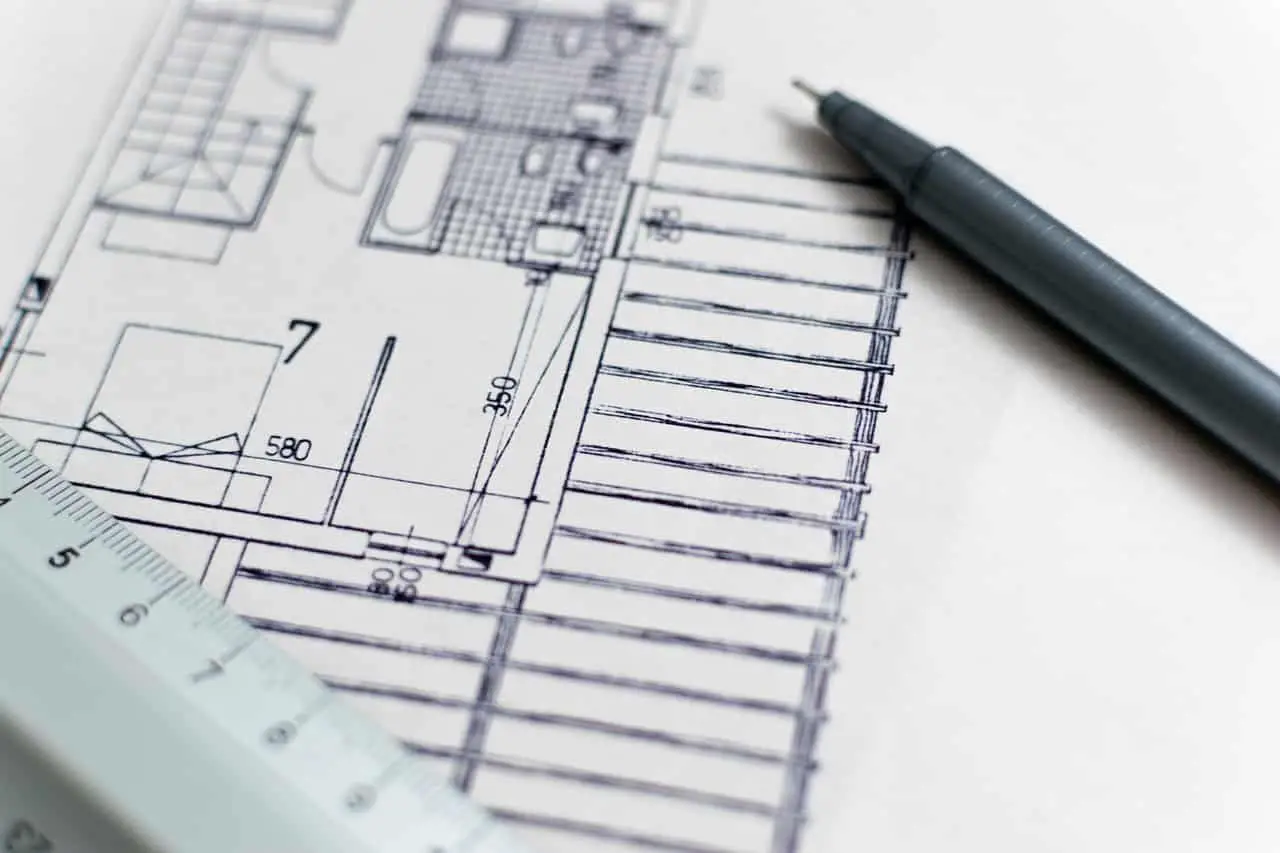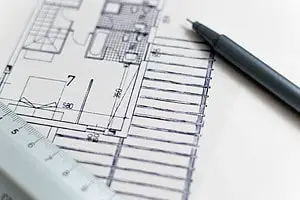Architecture is a complex and multifaceted profession that requires a range of technical skills, creativity, and critical thinking abilities. However, in addition to these hard skills, there is a growing recognition of the importance of soft skills in the architecture industry.
Soft skills, such as communication, collaboration, and problem-solving, are essential for architects to effectively communicate their ideas, work collaboratively with clients and colleagues, and navigate the challenges that arise during the design process.
Developing strong collaborative and communication skills is a crucial aspect of architect school. As the profession becomes more interdisciplinary and complex, architects are required to work with a range of stakeholders, including clients, contractors, engineers, and other design professionals.
The ability to communicate effectively, build relationships, and work collaboratively is essential for success in the field. In this article, we will explore the importance of soft skills in the architecture industry, and how architect school can help students develop these critical skills.
Key Takeaways
- Effective communication and collaboration skills are essential for success in the field of architecture.
- Architect school plays a crucial role in fostering these skills through practical learning opportunities, leadership and teamwork workshops, and networking events.
- Developing a strong sense of empathy and active listening skills is vital for architects to understand the perspectives of clients and colleagues.
- Mastering soft skills, including communication, collaboration, leadership, empathy, and active listening, can position architects for success in their future careers.
The Importance of Soft Skills in the Architecture Industry
The architecture industry heavily relies on the cultivation of soft skills, such as effective communication and collaboration, to produce successful designs and projects. While technical skills are necessary for creating functional and aesthetically pleasing buildings, soft skills are equally important for architects to work effectively in teams and communicate with clients, contractors, and other stakeholders.
Effective communication skills are essential for architects to convey their ideas clearly and succinctly. Architects must be able to communicate their vision to clients, contractors, and other team members to ensure that everyone is on the same page. Failure to communicate effectively can lead to misunderstandings, delays, and cost overruns.
Collaboration skills are also crucial for architects to work effectively in teams. Architects must be able to work with other professionals, such as engineers, contractors, and other stakeholders, to create a cohesive design that meets the needs of all parties involved. The ability to listen to others’ ideas and incorporate them into the design is also essential for architects to produce successful projects.
Building Effective Communication Skills
Effective communication skills are crucial for architects to succeed in their profession. This subtopic will discuss three essential components of effective communication:
-
Active listening and empathy are vital to building relationships with clients and colleagues.
-
Clear and concise communication is necessary for conveying ideas and ensuring everyone is on the same page.
-
Nonverbal communication, such as body language and tone of voice, can also greatly impact how messages are received.
Each of these components plays a critical role in effective communication, and architects must be skilled in all three to excel in their field.
Active Listening and Empathy
Promoting active listening and empathy in architectural education is crucial for fostering effective communication and collaborative problem-solving skills among future architects. Here are four reasons why:
-
Active listening helps architects understand the needs and concerns of their clients and team members. By listening carefully to what others are saying, architects can gain insight into what is important to them and develop solutions that meet their needs. Without active listening, architects may miss important information or misinterpret what others are saying, leading to misunderstandings and ineffective solutions.
-
Empathy allows architects to put themselves in the shoes of others and understand their perspectives. This skill is essential for building trust and rapport with clients and colleagues, as well as for designing spaces that meet the needs of diverse populations. By empathizing with others, architects can develop solutions that are inclusive and responsive to the needs of all stakeholders.
-
Active listening and empathy are key components of effective collaboration. When architects are able to listen actively and empathize with others, they can work together more effectively to solve complex problems. Collaboration requires a willingness to listen to different viewpoints, consider multiple perspectives, and work together to find solutions that meet the needs of everyone involved.
-
Finally, active listening and empathy are essential for building strong client relationships. By listening carefully to clients and empathizing with their needs, architects can develop solutions that meet their needs and exceed their expectations. This can lead to repeat business, referrals, and a positive reputation in the industry.
Clear and Concise Verbal and Written Communication
Clear and concise communication is essential in the field of architecture to ensure that all stakeholders understand the design intent and can effectively collaborate towards achieving project goals. Architects must be able to communicate their ideas in a way that is easily understood by clients, contractors, and other team members. This requires not only strong verbal communication skills, but also the ability to write clearly and concisely.
In addition to communicating effectively with others, architects also need to be able to communicate their ideas in a way that is easily understood by themselves and their team members. This involves creating detailed drawings and specifications that clearly outline the design intent and the materials and methods to be used.
The ability to communicate clearly and concisely is essential in all aspects of architecture, from initial concept development to final construction documentation. By developing these skills, architects can ensure that their designs are effectively communicated and implemented, leading to successful project outcomes.
Nonverbal Communication
Nonverbal communication plays a crucial role in architecture as it can convey emotions and attitudes that are not expressed through words, ultimately shaping the overall experience of a space. Architects must understand the various ways that nonverbal cues can be used in their designs to create a desired effect.
Some of the ways in which nonverbal communication is used in architecture include:
-
Proximity: The distance between objects within a space can convey a sense of intimacy or formality.
-
Lighting: The intensity and color of light can affect mood and create a certain atmosphere.
-
Materiality: The use of different materials can communicate warmth, texture, and durability.
-
Scale: The size of objects and spaces can communicate power, grandeur, or intimacy.
Understanding how nonverbal communication can be used in architecture is essential to creating successful designs that engage and communicate with people in meaningful ways.
Architects must also be aware of their own nonverbal communication when working collaboratively with others. This includes paying attention to body language, facial expressions, and tone of voice. Clear and effective communication is key to successful collaboration, and nonverbal cues can greatly impact how others perceive and respond to architects’ ideas and proposals.
By developing strong nonverbal communication skills, architects can enhance their ability to work effectively with others and create successful designs that meet the needs of clients and users alike.
Developing Strong Collaborative Skills
Effective collaboration is essential for success in the field of architecture, requiring the cultivation of strong communication skills to facilitate teamwork among diverse specialists. Architects working on projects often have to collaborate with engineers, contractors, and other professionals to achieve their goals. It is crucial for architects to develop strong collaborative skills to ensure that all stakeholders are on the same page, and the project is executed smoothly.
Collaborative skills are not just about getting along with others; they are about being able to contribute to a team effectively. This requires a level of understanding of the project goals, the roles of different team members, and the ability to communicate ideas clearly and concisely.
Developing strong collaborative skills can be challenging, but it is crucial to success in the field of architecture. Architects must learn how to navigate different personalities and communication styles to create a cohesive team. This requires active listening, the ability to give and receive feedback, and a willingness to compromise.
Additionally, architects must develop a strong sense of empathy to understand the motivations and perspectives of other team members. By doing so, architects can create a collaborative environment that encourages creativity, innovation, and problem-solving.
Ultimately, strong collaborative skills are essential for architects to create successful projects that meet client needs while also addressing the technical and aesthetic requirements of a project.
Enhancing Problem-Solving Skills
Enhancing problem-solving skills is an essential aspect of the architect school’s curriculum.
This subtopic covers three key points: analytical and creative thinking, decision-making, and time management.
Developing these skills is crucial for architects to excel in their profession, as they must be able to analyze complex problems, make informed decisions, and manage their time effectively to meet project deadlines.
Analytical and Creative Thinking
Developing analytical and creative thinking skills is crucial for architecture students to be able to approach design problems with innovative and well-reasoned solutions.
Analytical thinking involves breaking down complex problems into smaller, more manageable components, while creative thinking involves generating new and unique ideas.
The combination of these two thinking skills allows architects to approach design problems from multiple angles and come up with innovative solutions that meet the needs of their clients.
To develop analytical and creative thinking skills, architecture students should engage in exercises that challenge their problem-solving abilities. These exercises should involve analyzing existing buildings and structures to identify areas for improvement, brainstorming new and innovative design ideas, and collaborating with other students to generate solutions to complex design problems.
Additionally, architecture students should be encouraged to think critically about the social, economic, and environmental implications of their designs, and consider how their designs can contribute to the greater good.
By developing these skills, architecture students will be better equipped to tackle the complex design challenges that they will face in their careers.
Decision-Making
One crucial aspect of architecture is the ability to make informed decisions based on a thorough understanding of project requirements and constraints. In the field of architecture, decisions made during the design process can significantly impact the overall success of a project. Architects must weigh various factors, such as budget, functionality, and aesthetics, to make the best decision for the client. Therefore, the ability to make informed decisions is a vital skill that architects must possess.
To make informed decisions, architects must analyze and evaluate different options critically. They must consider the potential consequences of each decision and weigh the risks and benefits. Architects must also communicate effectively with clients, contractors, and other stakeholders to ensure that everyone is on the same page. Thus, decision-making is not only about individual analytical skills, but also about the ability to collaborate and communicate effectively with others. The table below illustrates the potential consequences of poor decision-making in architecture and the benefits of effective decision-making.
| Consequences of Poor Decision-Making | Benefits of Effective Decision-Making |
|---|---|
| Project delays | Project completed on time |
| Budget overruns or cuts | Project completed on budget |
| Design flaws | High-quality design solutions |
| Client dissatisfaction | Client satisfaction |
Time Management
Time management plays a critical role in the successful completion of architectural projects as it ensures efficient use of available time and resources.
Architects are often tasked with managing multiple projects at once, and without proper time management skills, it can be easy to fall behind schedule and compromise the quality of work.
Effective time management involves setting realistic goals, prioritizing tasks, and creating a schedule that allows for flexibility in case of unexpected delays.
Architects must also be able to communicate their time management strategies with their team members in order to ensure that everyone is on the same page.
This involves clear and concise communication about deadlines, progress updates, and any changes in the schedule.
By effectively managing their time and communicating their strategies, architects can ensure that their projects are completed on time and within budget, while also maintaining a high level of quality.
The Role of Architect School in Developing Soft Skills
Architect school plays a crucial role in fostering effective communication and collaboration among students, which are essential skills for success in the field of architecture.
Through group projects, presentations, and critiques, students learn how to articulate their ideas clearly and efficiently, listen actively to their peers, and provide constructive feedback.
These skills are not only important for working with fellow architects but also for communicating with clients, contractors, and other stakeholders.
In addition, architect school provides opportunities for students to work with diverse groups of people, such as those with different cultural backgrounds or areas of expertise.
This exposure allows students to learn how to navigate different perspectives and work towards a common goal.
By developing these soft skills, students not only become better architects but also better team members and leaders in their future careers.
Hands-On Learning Opportunities
Practical learning opportunities are essential for students to gain hands-on experience and apply theoretical knowledge in a real-world context.
Architect school provides various hands-on learning opportunities to students, such as design studios, workshops, and internships. These opportunities allow students to work collaboratively with their peers and develop their communication skills.
In design studios, students work on actual projects with a team of other students, each with their own set of skills and perspectives. This collaborative approach to learning allows students to gain valuable experience in working with others and practicing effective communication.
Workshops provide students with the opportunity to develop specific skills and techniques. These could include skills such as model making, drafting, or computer-aided design (CAD). By participating in workshops, students can apply these skills to their own design projects, gaining practical experience and building their portfolios.
Internships provide students with the chance to work with professional architects in real-world design projects. This experience allows students to apply their theoretical knowledge to actual projects and gain a deeper understanding of the profession.
Overall, hands-on learning opportunities are critical in developing strong collaborative and communication skills in architect school.
Networking and Professional Development
Engaging in professional networking opportunities and continuing education seminars can provide students with valuable connections and insights into the ever-evolving field of architecture. It is essential for aspiring architects to be up-to-date with the latest trends, technologies, and industry standards.
Networking events, conferences, and workshops offer students a chance to meet and interact with professionals, peers, and potential employers. These events provide a platform for students to showcase their skills, learn from experts, and gain valuable feedback on their work. Networking helps students build relationships with people who can provide guidance, mentorship, and job referrals.
Moreover, participating in professional development programs shows potential employers that a student is committed to the field and is continuously seeking to improve their skills. Professional development is not only about acquiring new knowledge and skills but also about developing a professional identity and personal brand.
Students can gain a better understanding of the architecture profession, including its ethical and social responsibilities, by attending seminars and workshops. By learning from experienced architects, students can gain insights into the various roles and responsibilities of architects, including project management, design, and construction.
Additionally, students can participate in leadership and teamwork workshops that help them develop strong collaborative and communication skills. These skills are essential for architects who work in teams and with clients to deliver successful projects.
In conclusion, networking and professional development opportunities offer valuable learning experiences for architecture students by providing them with a better understanding of the profession, building their networks, and developing collaborative and communication skills.
Putting Your Soft Skills into Practice in Your Future Career
Mastering soft skills is crucial for success in the architecture profession, as it enables professionals to effectively communicate, collaborate, and lead teams towards achieving their goals. In practice, architects must apply these skills in a variety of contexts, including client meetings, team meetings, and presentations.
One way to put these skills into practice is by actively listening to clients and colleagues, and responding with clear communication that addresses their needs and concerns. This requires architects to be able to empathize with others and to communicate in a way that is both clear and concise.
Another way to put soft skills into practice is by cultivating strong collaborative relationships with other professionals. This involves being willing to work with others, even when there are differences in opinion or approach. Architects who are able to work effectively in a team setting can bring a diversity of perspectives to a project, which can lead to more innovative and creative solutions.
Finally, architects must be able to lead teams towards achieving their goals. This requires having strong leadership skills, including the ability to delegate tasks, manage time effectively, and inspire others to work towards a common vision. By mastering these soft skills, architects can position themselves for success in their future careers.
Frequently Asked Questions
What is the typical duration of an architect school program?
The duration of an architect school program varies depending on the country, program type, and level of education. In the United States, it typically takes five years to complete a Bachelor of Architecture degree, which is a professional degree accredited by the National Architectural Accrediting Board.
A Master of Architecture degree, which is often pursued after completing a bachelor’s degree in a related field, can take an additional two to three years to complete. In other countries, such as the United Kingdom and Australia, architecture programs can range from three to seven years in length, with some programs offering an integrated Bachelor and Master of Architecture degree.
It is important to research and compare different architecture programs to determine the best fit for individual educational and career goals.
How do architecture schools assess and grade students’ soft skills?
Architecture schools assess and grade students’ soft skills by utilizing various methods, including peer evaluations, self-assessments, and faculty evaluations.
Peer evaluations involve students evaluating their classmates’ teamwork and communication skills, while self-assessments require students to reflect on their own abilities and progress.
Faculty evaluations may include observations of group discussions or presentations, as well as feedback from project partners or clients.
In addition, some architecture schools may incorporate soft skills development into their curricula through workshops, seminars, or extracurricular activities.
Assessing and grading soft skills is important for architecture students, as these skills are crucial to their success as professionals in the field.
By providing opportunities for students to develop and demonstrate their soft skills, architecture schools can help prepare them for the collaborative and communication requirements of their future careers.
Can soft skills be taught in online architecture courses?
Soft skills can certainly be taught in online architecture courses. However, the effectiveness of such teaching may vary depending on the nature of the soft skills being taught, the methods used to teach them, and the individual learning styles of the students.
Some soft skills may be easier to teach online, such as time management and self-discipline, as online learning environments often require students to be more self-directed and organized. However, other soft skills that involve more interpersonal interaction and collaboration, such as communication and teamwork, may be more challenging to teach online and may require more creative approaches, such as virtual group projects and interactive simulations.
Ultimately, the success of teaching soft skills in online architecture courses will depend on a combination of factors, including the quality of the course design and delivery, the engagement and motivation of the students, and the ability of the instructor to provide effective feedback and support.
How do architecture schools prepare students for working with clients and stakeholders?
Architecture schools prepare students for working with clients and stakeholders by providing them with a range of skills and knowledge that are essential to the profession. These include design thinking, problem-solving, communication, and collaboration skills.
In addition, students are exposed to various tools and techniques that enable them to work effectively with clients and stakeholders, such as presentation skills, negotiation skills, and project management.
Architecture schools also provide students with opportunities to engage with real-world projects, where they can interact with clients and stakeholders, and learn how to navigate complex relationships and situations.
Ultimately, the goal of architecture schools is to equip students with the skills and knowledge they need to be successful professionals who can work collaboratively with clients and stakeholders to deliver high-quality projects that meet their needs and expectations.
What are some common challenges that architecture students face when developing soft skills, and how can they overcome them?
Architecture students often face challenges when developing soft skills, such as communication and collaboration. One common challenge is a lack of practice and exposure to real-world situations. Many students are used to working independently and may struggle with group work or communicating their ideas effectively.
Another challenge is a lack of feedback or guidance on how to improve. Soft skills are often not as easily measurable as technical skills, making it difficult for instructors to provide specific feedback.
To overcome these challenges, architecture students can seek out opportunities to practice their soft skills, such as participating in extracurricular activities or internships. They can also seek feedback and guidance from instructors, peers, and professionals in the field.
Ultimately, developing strong soft skills is crucial for success in the architecture profession, and students must be willing to put in the effort to overcome these challenges.
Conclusion
The architecture industry is highly competitive, and in order to succeed, professionals must possess strong technical skills as well as soft skills. Soft skills, such as communication, collaboration, and problem-solving, play a crucial role in the success of architects.
Building effective communication skills involves being able to clearly and concisely communicate ideas to clients and colleagues. Developing strong collaborative skills involves working effectively in teams and being able to compromise and find solutions that benefit everyone involved. Finally, enhancing problem-solving skills involves being able to think critically and creatively to find solutions to complex problems.
Architect school plays a vital role in developing these soft skills. Hands-on learning opportunities, such as design studios and internships, provide students with the chance to work on real-world projects and collaborate with others in their field. Networking and professional development opportunities also allow students to connect with industry professionals and gain valuable insights into the industry.
By putting their soft skills into practice, students can prepare themselves for successful careers in the architecture industry.
Overall, the importance of soft skills in the architecture industry cannot be overstated. Through the development of effective communication, strong collaboration, and problem-solving skills, architects can succeed in a highly competitive field. Architect school provides students with the tools and opportunities necessary to develop these skills and put them into practice in their future careers.









































































